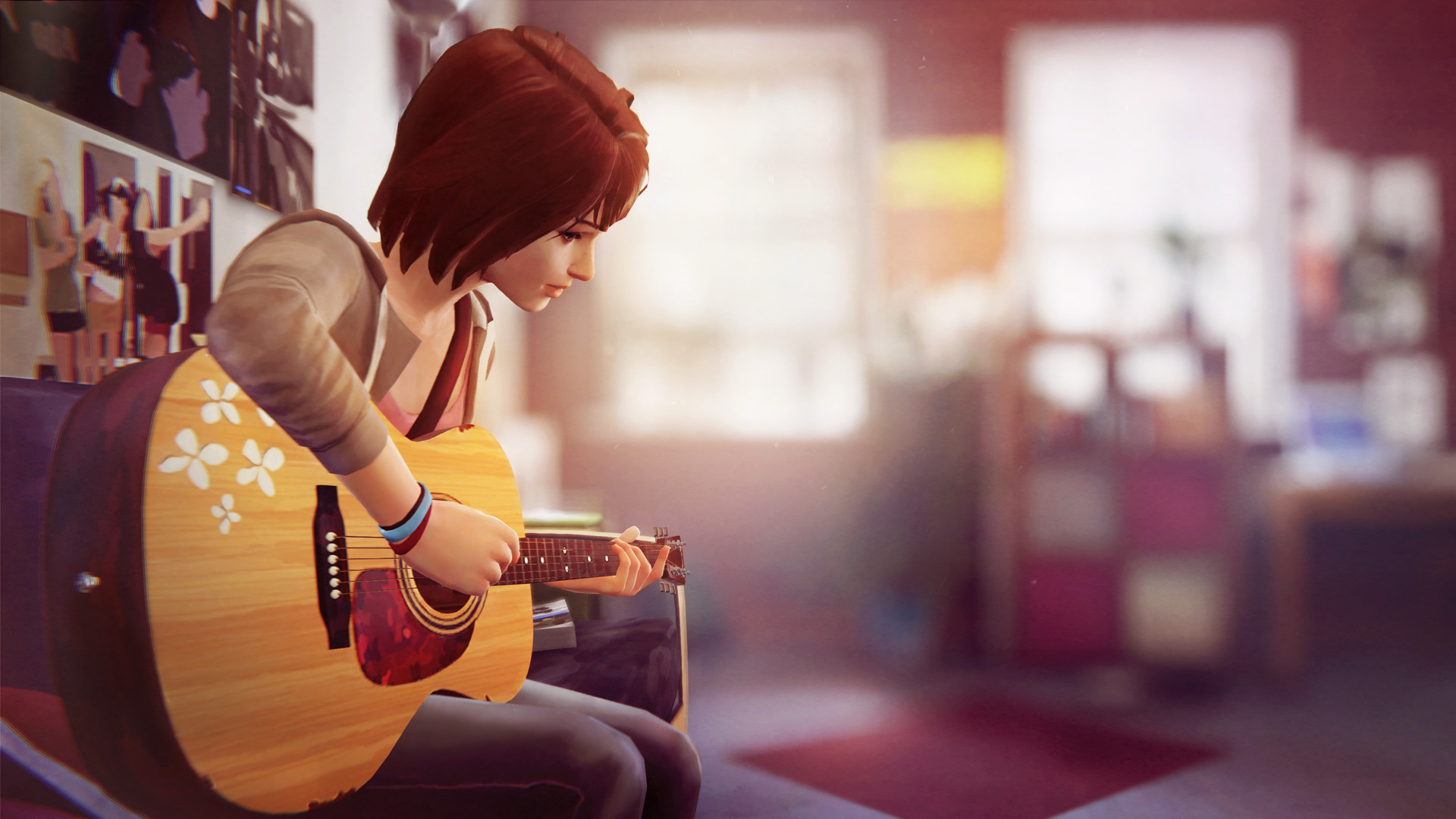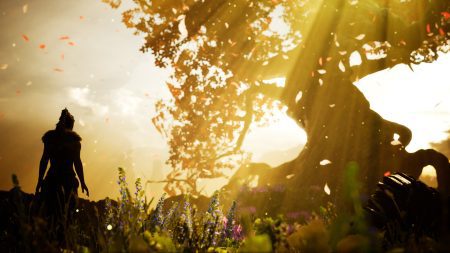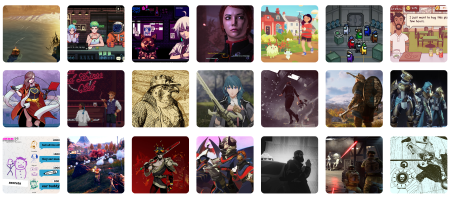What is a Game Over Hangover?
Games are meant to be played. Good games play you, too. But like all mediums of art, the influence of great games doesn’t necessarily stop just because you’re done playing. They stick with you, a kind of temporary filter through which you view and interact with the real world.
Listen to a song you used to love and the nostalgia takes you back, filling you with old emotions. Watch a genuinely frightening movie and you may find yourself wary of what lurks, unknown, in the shadows. Play a game like Spec Ops: The Line and maybe you’ll find yourself responding differently to the atrocities of real-life wars.
I call this lingering effect Game Over Hangover, because it speaks to the temporary lingering effect of a powerful gaming experience. Also, I like rhymes.
So, let’s dig in. These are five games that stuck with me after I put them down.
The Long Dark
The Long Dark is the experience that inspired this list. The game takes the idea of “survival” very seriously, using it as the primary driver of mechanics that make it one of the most genuinely captivating open world games I’ve ever played. It takes place in the fictional Canadian region of Great Bear, where snow storms, subzero temperatures, and howling winds are the norm. This is not so dissimilar from my own home in interior Alaska, which is likely why it resonated so heavily in my mind.
I know about cold. I have years of experience working outdoors during the frigid winters of the Interior, exposed to temperatures that can dip to -50 degrees F or colder. I know the importance of layering, how clothes are armor against the cold and wind. I know the sting of the cold, the way it creeps into your lungs and steals your breath, the feeling of being so close to hypothermia that you start to feel warm again.
The Long Dark takes the perilousness of the challenge of surviving the cold and moves several steps forward, adding predators, exhaustion, dehydration, and starvation to the list of things that can easily kill you in climates like these. But for me, it wasn’t the unceasing danger that stuck around in my head after my time in Great Bear; it was the way these dangers were communicated to the player.
A set of gauges (for heat, energy, hydration, and hunger) line the bottom of the HUD in The Long Dark, accompanied by arrows that indicate the direction and speed at which the gauges are moving. Get too low on any of those things and you’re in for some serious trouble. I spent a lot of time staring at those gauges.

For days after my time with The Long Dark, when I got hit with a cold gust of wind while outside or started to feel hungry because I’d forgotten breakfast or something, I’d imagine those little arrows pointing down, my own personal temperature and hunger gauges diminishing at alarming rates. When I stayed up too late writing or gaming the night before, I’d picture my energy gauge (depicted by an eye) sitting at half-full the next morning, begging me for a nap or a warm cup of coffee. When I’d put on my trusty Carhartt jacket and face mask to head outside, I envisioned how much resilience to the cold they offered me, how this might look on an inventory screen.
The game also made me deeply suspicious of the implications of northern lights, though I won’t delve into that in case you’ve yet to play the game’s Wintermute story.
Hellblade: Senua’s Sacrifice
Hellblade is something special. You play as the titular Senua, a breath-takingly intrepid Pict woman on a hellacious journey that is as much a metaphor for her psychosis as it is a reality she is enduring. She hears voices, and by extension, so do you. Sometimes they’re helpful or sympathetic, but usually they’re aggressive, conniving, and deceitful.
From the start, Ninja Theory took their depiction of Senua’s psychosis very seriously, involving experts like University of Cambridge Neuroscientist Paul Fletcher and Professor Charles Fernyhough of Durham University to make sure they represented her experiences in a way that accurately and respectfully represented the affliction while also staying true to the fantasy setting. To say they succeeded is an understatement. The game was very well received, both critically and commercially, and was, in my opinion, the standard bearer for Games-as-Art in 2017.
But those voices. My God, those voices. If you’re unfamiliar with the game, watch this trailer to see what I’m talking about:
The whole tone of the game is unsettling, full of haunting whispers and danger and a sense of reality that is constantly shifting, keeping the player off balance. Senua’s amazingly detailed facial expressions convey her anguish and fear throughout the journey, helping to magnify the emotional weight of her story.
I binged my way through Hellblade with a ferocity I generally reserve for new seasons of Black Mirror or Stranger Things, and it’s possible that I may have overexposed myself. So engaging and mesmerizing was her plight that for a short time afterward, I felt this odd disconnect from the world around me, as though my own journey through life was somehow a metaphor for my own suffering. I felt a sense of darkness in the world, like the tendrils of some unseen malevolence had wrapped themselves around my world. It would be days before I moved on from this one, before I shook the feeling this game gave me.
Of course, my intent is not to sit here and say that I have any capacity to relate to someone suffering from psychosis. Rather, I think my hangover from the game is a testament to just how well portrayed Senua’s character and journey truly were. Hellblade Senua’s Sacrifice simply got to me in a way I was not prepared to handle.
Destiny, Destiny 2
Look, if you follow me on Twitter or have read any of my ramblings on my personal website, you probably know that I am a big fan of the Destiny franchise. It’s a complicated relationship. Destiny is that terrible partner, the one that always hurts you but is so damn charming that you always end up taking them back. Trust me, I could fill volumes with what I have to say about the series, from issues I have with Bungie and the Eververse to the countless stupid Destiny-related jokes and references I have shoe-horned into my real life. Right now, though, I’m here to talk about Public Events.
If you’ve never played Destiny before, here is a brief rundown of how Public Events work: The series features “patrol” areas on each playable planet, which are filled with enemies, treasures, and mission markers. These patrol areas are public instances, meaning you’re likely to encounter other players while there. Within some of these areas, there is occasionally a brief event (a public event, you might say) preceded by some obvious visual cues to let everyone know it’s about to begin.
The skies darken. Some object or another falls from the sky or emerges from a portal. Your cheeky sidekick, Ghost, chimes in to let you know things are about to get serious. The players in the area, should they choose to get involved, are then tasked with defending the area, solving some kind of simple puzzle, or defeating a bullet-sponge enemy. Sometimes all three.

Public Events tend to offer decent rewards, and, given the multiplayer nature of the game, are one of the most entertaining things to do in Destiny. This naturally leads to farming the events, which is something I have found myself doing so many times since the first game launched in 2014 that now every time the skies darken from a cloud moving in front of the sun in real-life, I stop moving and think “Public Event.”
Let me repeat that for emphasis: When a cloud moves between me and the sun, casting its shadow on the ground around me, in my real, actual, waking life, my brain goes all “Eyes Up, Guardian” and informs the rest of my person that a Public Event is about to begin.
Of all the games on this list, this one is by far the most deeply ingrained. I hardly play Destiny 2 these days, yet my brain continues to assume all cloud shadows are indicative of massive public confrontations and the chance to score some of that sweet sweet loot.
Splinter Cell: Chaos Theory
This is the story of my very first Game Over Hangover.
When Chaos Theory dropped on Xbox in 2005, I was immediately enthralled. I’ll be honest here, I don’t remember much about the game at this point, except a bit of dialogue in which iconic spy Sam Fisher tells his boss, Lambert, “When I think guerrilla, I think Kalashnikov.” (By the way, as I typed that, I realized that despite remembering that line for over a decade, I never knew what “Kalashnikov” actually meant. Google says he was just talking about AKs. The More You Know, I guess.) What I do remember, though, is a distinct experience I had following the two or three days I spent fiendishly consuming the game.

It was clear and crisp fall evening in downtown Eugene, Oregon. I was walking down the street with some friends on our way to a concert. Up ahead was a brightly illuminated 7-11, its parking lot oddly empty on an otherwise busy weekend night. As we passed by the storefront, I spotted a security camera overlooking the entrance to the place. Without really meaning to, I slipped right back into superspy-Sam-Fisher mode. (Picture me pulling down my iconic, three-eyed night vision goggles. The little chirping sound as they power-up. You know the one.)
I imagined the vision cone of the camera as it focused in on the doorway. No way of getting through the main entrance undetected, obviously. Worse yet, another camera sat perched atop a light pole in the parking light, this one significantly higher, able to cover a much wider area. This one appeared to be pointed at a metal shelf holding propane tanks near to the entrance. Those would create a nice distraction if need be.
Instinctively, I scanned the area further. I saw a closed dumpster in the shadows of the alleyway alongside the building, along with a gutter running down to the ground from the roof. For a brief second, it seemed entirely plausible that there would be an alternative entrance on the roof. Why else would those clearly climbable objects be placed in the shadows where I would be safely concealed from enemies? Surely, I could get inside, sneaking through a vent on top of the building, across the gap between the roof and the ceiling panels. I could descend into the manager’s office and abscond with evidence of some grand convenience store conspiracy. Maybe the manager would walk in mid-heist, and I’d be forced to do those crazy splits from wall to wall that only Sam Fisher can do.
When I came to my senses a few moments later, it was clear to me that this was the single nerdiest thought that had ever entered my brain up until that point. I never told my friends. In fact, this might be the first time I’ve ever summoned the humility to tell this story, at all.
Life Is Strange
It’s 3am. I’m sitting on my couch, bathed in the flickering glow of my television. The curtains are drawn. I’m the only one in my house.
Through the window behind me, I hear wind whistling through the trees in my back yard. Summer storm. Rain beats against the roof, a million tiny patters turned into one dull, endless roar. Occasionally, rolling thunder cracks through the sky, demanding attention as it lords over the storm.
I should be sleeping, but I’m wrapping up the final episode of Life is Strange. In this moment of the game, the weather is an amplified version of what’s happening outside my window, magnifying the intensity of the moment.
But let’s go back in time about a month and half: I went into Life is Strange with absolutely no idea what I was getting myself into. I was late to the party, as well, having just started the game the day episode 4 came out. What I found was a game that felt like it was designed for me. Much like main character Max Caulfield, once upon a time (before I ended up in Alaska) I was an introverted art student from the Oregon coast who had a particular fondness for moody acoustic music. Except, you know, I didn’t time travel.

The tone and mood of the game just immediately resonated with me. Developer Dontnod’s depiction of the coastal pacific northwest is uncanny, down to the style of architecture, the layout of Arcadia Bay, the way the wind-swept trees bend in toward the land all along the coastline. It felt a lot like home. The soundtrack is a warm blanket that, to this day, I’ll still throw on when the mood is right.
I cannot recall a game I’ve played that had better narrative pacing than Life is Strange. The game sunk its hooks in early, and I was enraptured through to the end (including those painful weeks of waiting between episode 4 and 5), when the game’s explosive ending hit me like an emotional mac truck.
So there I am, sitting on my couch, jaw agape, surrounded by a pair of storms, crashing through the final act until I reach the credits. As they roll, I’m unable to move or speak. I watch the entire thing, shut off my TV, and just sit there in darkness for the next 45 minutes, trying to process what I’d just experienced as the thunder rolls dramatically behind me. Days pass before I know what to say or feel about the final chapter of Life is Strange, about the fates of Max and Chloe and that wonderful little seaside town.
I thought a lot about excluding this entry from the list. After all, it’s difficult to discuss without major spoilers, and sitting on my couch isn’t exactly a riveting story. Ultimately, however, I decided to put it in because while this certainly wasn’t the longest lasting game over hangover I’ve experienced, it was absolutely the most profoundly intense reaction I’ve ever had to any story. In addition to this list, Life is Strange also occupies a spot in my personal Top-5-Games-of-All-Time list, if you need more evidence of this game’s lasting impact on me.
We Want to Hear About Your Game Over Hangovers
There you have it: My Top 5 Game Over Hangovers. Let us know in the comments your own Game Over Hangover memories that you have. Which games stuck with you after you put them down?
Geron is a freelance journalist currently holed up in the middle of Alaska. He is in love with gaming both for its potential as a medium in the modern world and its simpler role as an endlessly entertaining past time. When he isn't gaming or writing about games, he can usually be found singing loudly to his children or complaining about the cold.
Twitter: @lowsodiumgamer












2 Comments
Well done my good man I’m so pleased you are doing well and things you love! An so well written as well. It was an awesome article and it makes it even cooler that I went to school with you because I can put a voice behind the words you write. Keep up the awesome work brother
Oh!! Btw I meant to mention my game hang overs haha. One would be mass effect 2 and 3 for sure. They captivated me and filled me with an adventure that occupied my dreams. From flying around the galaxy to the relationships you form. Another game lately that has sucked me in has been horizon zero dawn. If you haven’t played it.. I recommend it. It’s fantastic